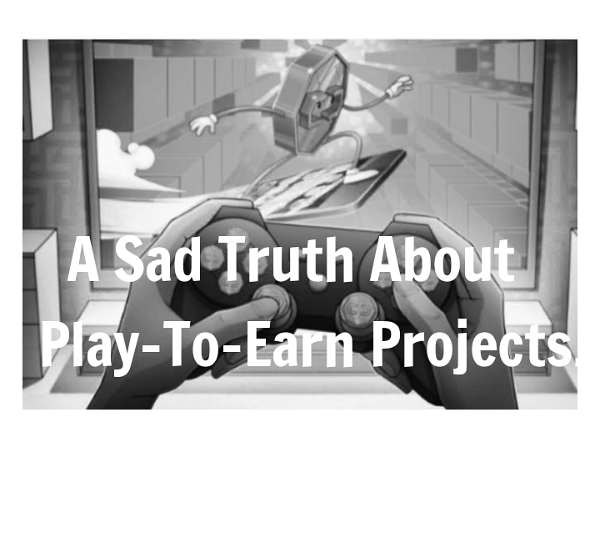NFT games and the idea of Play-to-earn gaming gained its spotlight in the crypto space during the last 2 quarters of 2021. During that time, thousands of NFT and Play-To-Earn projects emerged and it's undeniable that it made a huge impact for the adoption of blockchain that gained the attentions of million people to jump in and learn what's cryptocurrency is all about.
Many people anticipated the potential of NFTs and the Play-To-Earn idea that it will be the future and the traditional gaming where only the company are gaining profits from players will be replaced through this concept. However, things doesn't worked out really well as the risks from it has also risen victimizing a lot and also giving negative impact for the adoption of cryptocurrency and blockchains.
It Became The Haven For Scammers.
Believe it or not, with thousands of NFT and Play-to-earn projects in 2021, only a few percentage of those projects are still operating until now. Most of those projects that was launch in the past year was just a scam from the start that eventually exited with people's money - rugpulls, honeypot, slow rug, etc.
The trend has gained the attentions of people, especially those who still doesn't have so much idea of how cryptocurrency works, that were only after the profits it can get from playing NFT games without realizing the possible risks. Scammers took an advantage from people's perceptions with NFT games and found a new way to victimize people and to gain a lot of money.
Scammers, or should I say scam projects, were promising an early ROI (return of investment) for players and people biting into the bait. Some can possibly get their ROI with it but mostly people will just eventually get trapped after the hype. This kind of scheme is obviously a first come first serve basis. The early you are, the more possible you can get your investment back and possibly get a good profit.

There Is Still A No Sustainable Model.
The biggest problem of NFT games is to how they can make a very sustainable economy while giving out rewards to its players. We have seen a few strategic approach by great developers with an economists on their side but still that didn't turned out well.
First thing was implenting an "oracle-system" rewards where players can get a reward from the game depending on the oracle's reading. Oracle's job was to maintain the dollar value each players can get from playing the game. This is how oracle works for rewarding players;
If the price of the token goes up, players will be rewarded with lesser tokens but will still have the same dollar value. Meaning, even if the price surges 100% or beyond, the rewards will still be same in dollar value but different in token's quantity.
But the mirror of this is where the problems occur.
When the price of the token goes down as well, the players will still receive the same dollar value but with more tokens. Meaning, everytime the price of the token goes down, players can get more quantity of tokens while maintaining the amount of dollar it can get. And this was the hidden problem for every oracle games.
This was just recently realized that an Oracled-system reward's nightmare will be when the price is being on a downtrend. If the price of the tokens continues to in a bear trend, players will get more and more tokens from the reward pool and that will eventually deplete it and the project will eventually announced "bankruptcy" in their reward pool.
Another rewarding system Play-To-Earn projects uses are by using a dual-token system - one is the governance token and one will be the reward token. We know few NFT games uses this kind for rewarding players in the game such as Axie Infinity with $AXS and $SLP and Pegaxy with $PGX and $VIS.
Dual-token system was a good approach for rewarding experience but it was not sustainable. When a game gathered a lot of attentions and onboarded people to play the game and get rewarded, the game will be minting more token supply to reward those players. The game mostly have this "scholarship program" that can let people who doesn't have an initial amount to buy their own NFT to play by being a scholar and can start earning tokens with the lended NFTs. And this is where the problem in the economy for the dual-token games start with - supply and demand.
The supply of the rewarding token will eventually experience massive inflation because lots of players are minting new tokens in the game while having lesser demands from its use cases causing for its price to tank. Reward token in a dual-token system game will be the most affected since players can get it almost easily and can dumped/sell it in the market to gain profits and get their investments back.
Conclusion.
We are still obviously in the early stage of blockchain gaming and what's happening with it right now can still be considered as trial and error. Especially with the economy and sustainability problem, we can consider this as a temporary hindrance and the space will soon realize how to have a sustainable economy.
END.
Is this your post or copy-pasta?
Posted Using LeoFinance Beta
This my original article from other platform. I included the link below.